
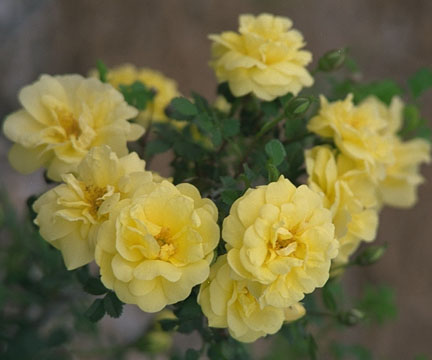
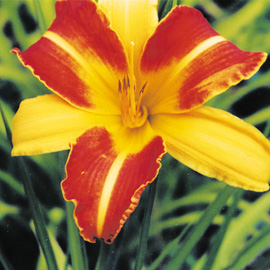
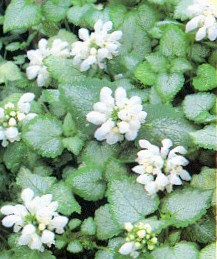
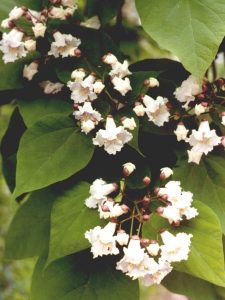

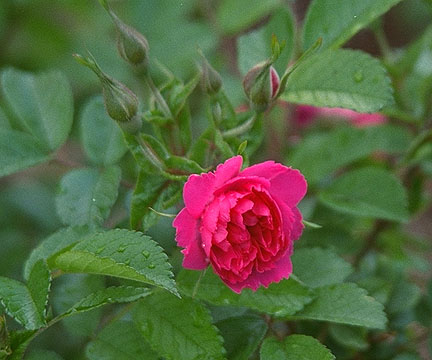
We have chosen a few categories of 'Summer Plants', click on the links to view details of the group.
|
|
|
|
|
 |
Roses
 |
|---|---|---|---|---|---|
 |
 |
 |
 |
 |
PEONIES
Early summer at "The Willow Garden" is blessed by the
blooms
of
many Peony cultivars.
Most are reasonably
established
plantings with plants obtained from many sources. We have, in recent
years,
been growing peonies from seed. Seeds collected from many plants are
sown
and within three-four years some result is usually visible. Surprises
are
certainly the order of the day! A simple explanation for growing
peonies from seed is included . The majority of the plants have now bloomed and show quite a variety of color and form. One of the most beautiful to date is one we have named (unofficially!) 'pink swan' . The next step is to label and move them to a more spacious home in other areas of the garden. Many more peonies from seed have been grown. They have given us a great variety of interesting forms. Many were sold at our annual Plant Sales, othere were moved to various garden locations. We have found there are now places in the garden which are too shady for peonies to thrive. This has meant some moving of plants to sunnier locations. 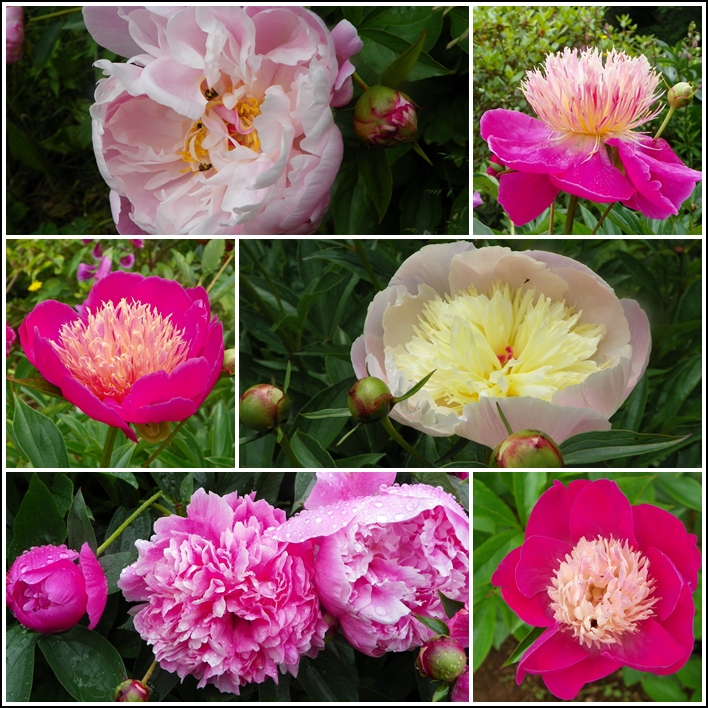 Among the many peonies grown, two of the most
interesting, are
the
'fern-leafed' peonies...Paeonia tenufolia.
We have two forms, the first has more coarsely divided foliage with single blooms; the second, very fine foliage and double blooms. They seem steadfastly disinterested in reproduction since no visible pollen production has been seen. There may have been only one occasion when the single form set seed. They are one of the
earliest
of all the peonies to bloom.
Other species peonies also have an early bloom period. Over the years these species have made quite good clumps and have seeded off to some extent P. obovata, P. officinalis, P. veitchii are three additional species. All bloom very early relative to the P. lactiflora types. We received seeds from Sweden of Paeonia suffructicosa
several years ago.
They were planted outside in a row in the fall. There were many that sprouted and grew well . It has taken 3-5 years for these Tree Peonies to bloom. Sometimes we want to move or
divide Peony
plants, for a visual story of that procedure check
the link
For peony images
from spring/summer
2005 click
here |
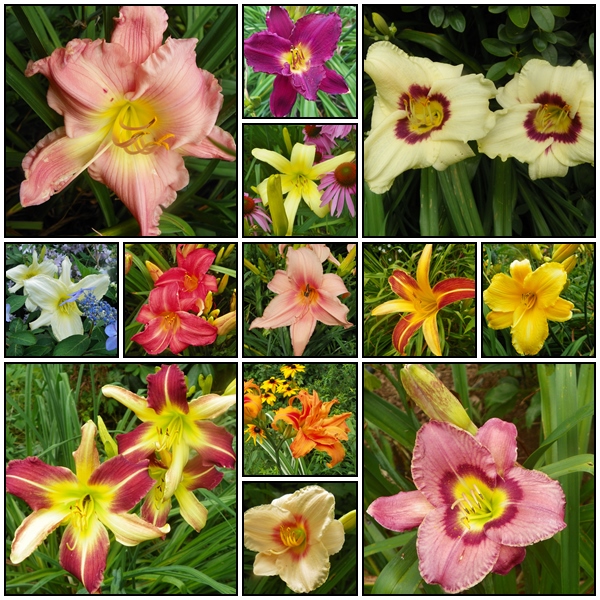
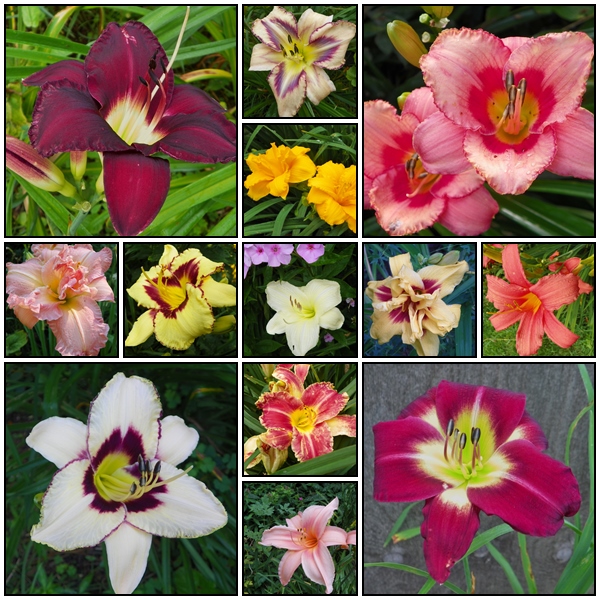
|
2013 Daylily 2010 Daylily 2004 Daylily |
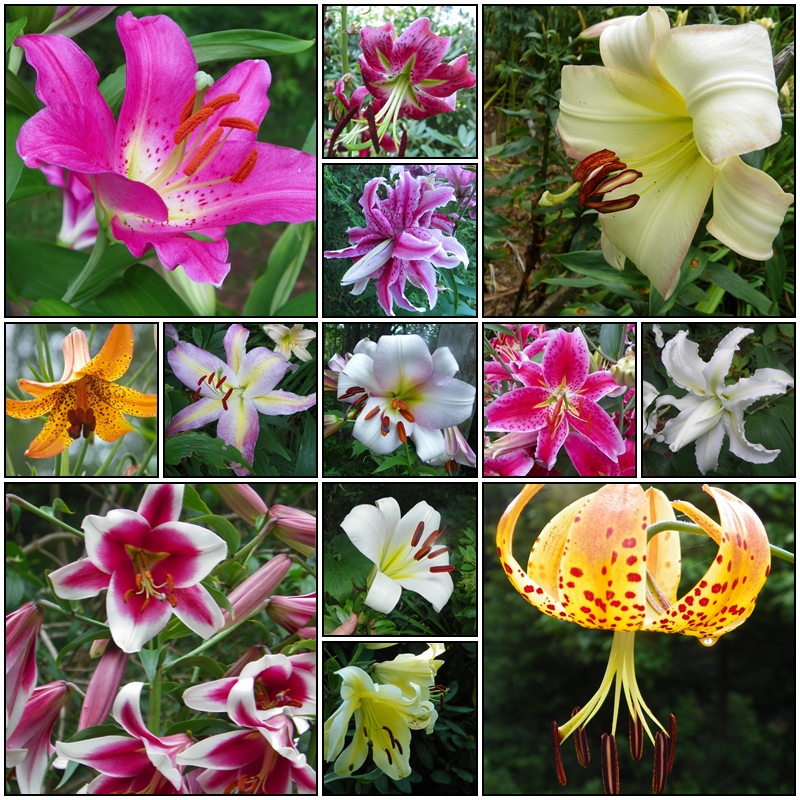
|
here for Lilies 2008 |
ROSES
Rose season follows
closely and actually overlaps
peony season. We do not have formal rose gardens, but a rather informal
assortment of climbing and shrub roses. Our soil is rather on the light
side for a rose's liking, so a tremendous amount of soil
amendments
must be added, both for nutrients and moisture retention...the story of
our lives!
Many of our roses are from the Explorer Series of hardy roses
developed
in Ottawa. Named after many early Canadian explorers they toss in a
history
lesson.
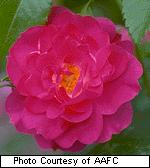 This early season shot is of the climber 'John Cabot' It is very dependable, rarely suffering any amount of winter damage. Another old image. The bed has had a ground cover planting of Nepeta faessinii added, plus a clematis or two. |
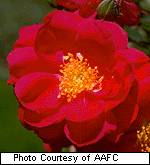 The climber 'Henry Kelsey' is likely the closest we have to a red rose. It is a great struggle to have it stay in good shape the whole season. This is a very old image. This rose doesn't look quite this good after many years. The area needs to have a serious renovation. 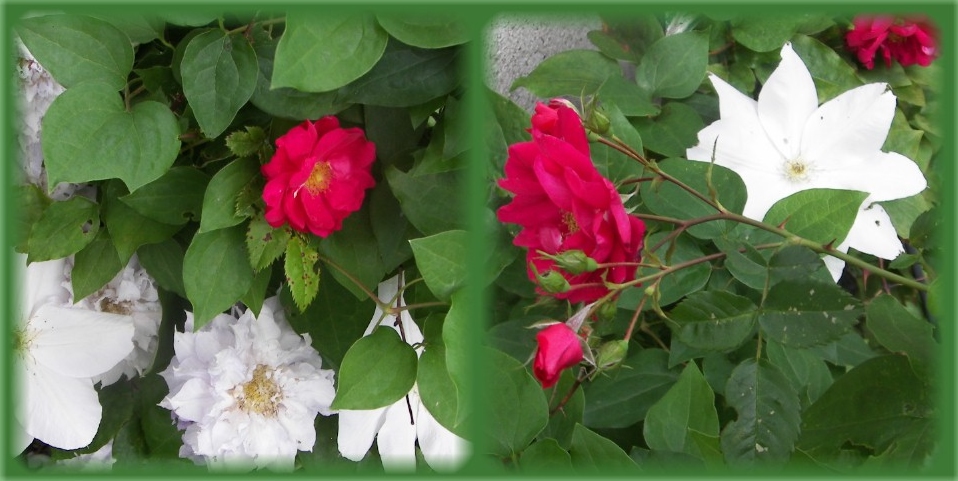 'Duchess of Edinburgh' clematis |
Our back rose arbor was built in the fall of 2000. It was planted in spring 2001 with two 'Dorothy Perkins' climbing roses we had grown from cuttings the year before. This hardy climber is very vigorous and is covered with pink flowers quite late in July. We also planted several plants of 'John Davis' in the surrounding bed. |
The two climbers had grown up and over the arbor by the time fall arrived. |
|
'John Davis ' is a beautiful pink shrub rose
that may reach
4-5 feet.
A bit of judicious pruning can keep the plants more compact. 'He' is
prone
to mid-summer black-spot, but usually recovers for a good late bloom.
|
|
|
Another
beautiful and
fragrant rose
is
Koningen von Danemark |
Our
specimen of 'Morden
Sunrise' is sadly among the deceased!.
|
We
constructed a new rose arbor
this spring.
Planted
on either side are Dorothy Perkins roses, the light version on the
down-side,
the dark version on the upper side.
The surrounding beds
have plantings of
azaleas,
butterfly
bushes, nepeta and 'Wave petunias' for some summer color.
Below is a view through this arbor in late August, 2004
Rose 'Linda Campbell' is in the foreground, this rose has been very
sturdy, but is very challenging to photograph.
The
intense red turns quite glaringly out of focus. This whole arbor area
has been transformed over the years with quite a number
of azaleas and rhododendrons predominating.
A magnolia Bill grew from seed has become a sizable tree just below.
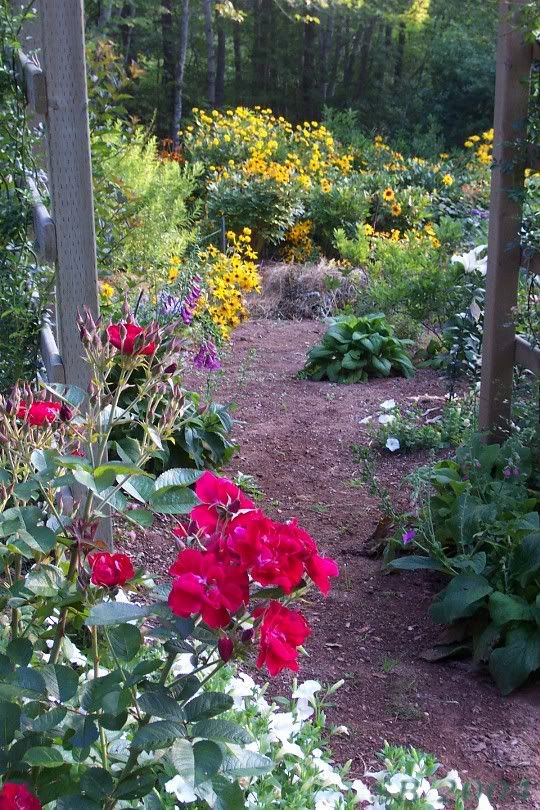
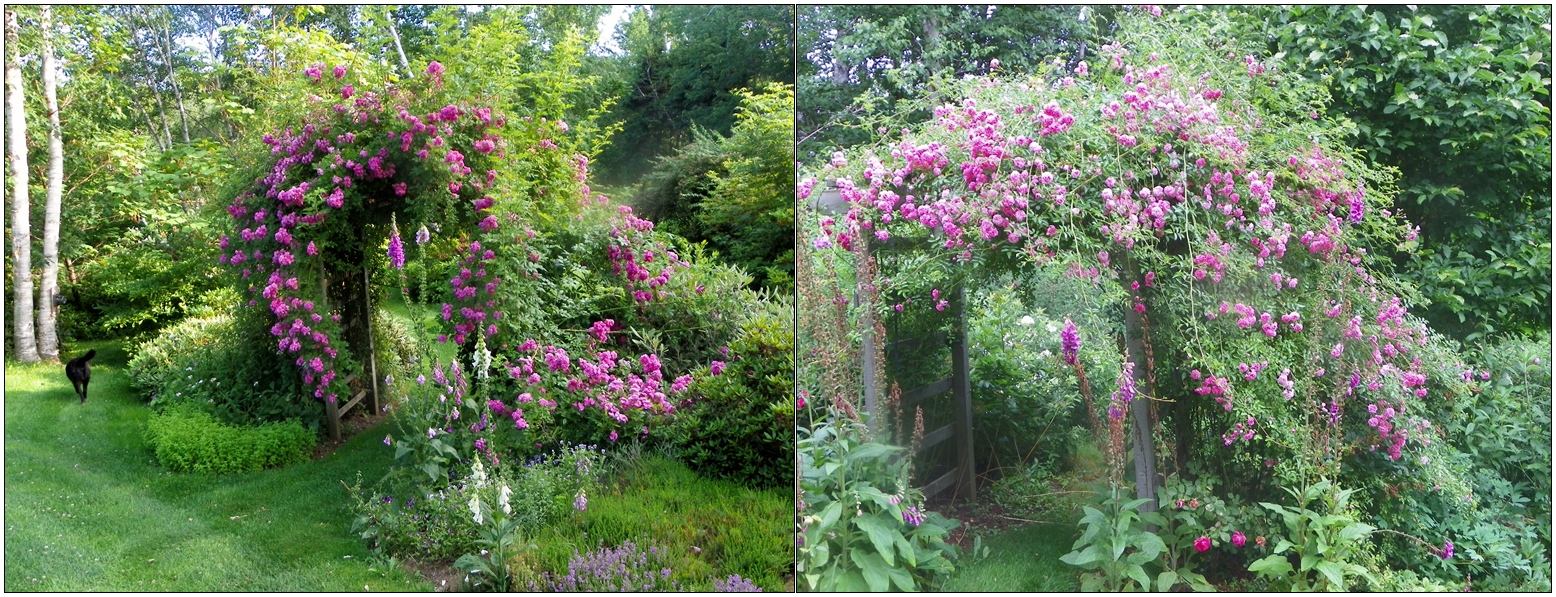

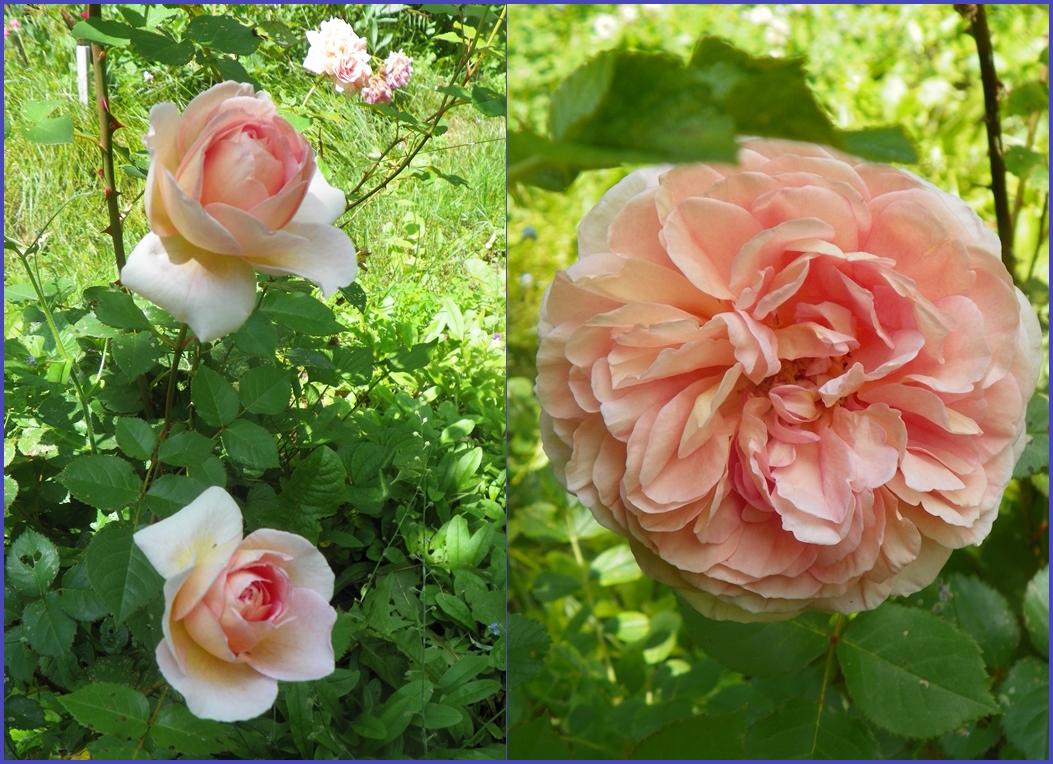
|
Old Heirloom Roses, Bedford ,NS Cornhill Nursery,Peticodiac, NB |
|
Roses 2004 Roses 2005 - Roses 2006 |
|
|
PERENNIALS |